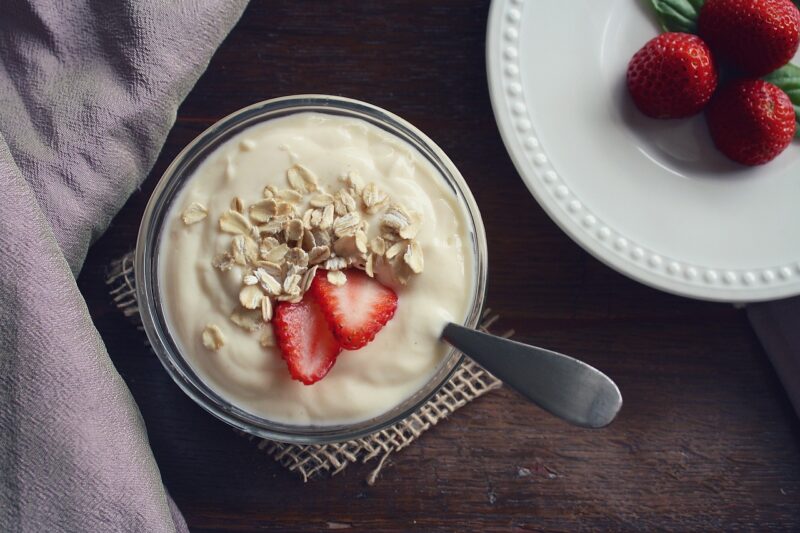Exploring Plant-Based Alternatives: How to Make Dairy-Free Dishes
November 11, 2024

In recent years, plant-based diets have surged in popularity, prompting many to explore dairy-free alternatives. Whether for health reasons, ethical concerns, or environmental awareness, more people are opting for dairy-free lifestyles. In this article, we will explore an array of plant-based alternatives and how to incorporate them into delicious, satisfying dishes that don’t sacrifice flavor.
1. Understanding Plant-Based Dairy Alternatives
Plant-based dairy alternatives are products made from non-dairy sources that mimic the texture and taste of traditional dairy items like milk, cheese, yogurt, and butter. The most common bases for these alternatives include nuts, seeds, grains, and legumes.
Types of Dairy Alternatives:
– Plant Milks: Almond, soy, oat, and coconut milk are popular choices. They can be used in everything from beverages to baking.
– Vegan Yogurt: Typically made from coconut, almond, or soy milk, vegan yogurt is a great source of probiotics and can be stirred into smoothies, used in dressings, or enjoyed with granola.
– Cashew and Almond Cheeses: These dairy-free cheeses are made from nuts blended with water, herbs, and spices to create varied flavors and textures, perfect for spreads or toppings.
– Plant-Based Butters: Made from oils and sometimes nuts or seeds, these alternatives can be used for cooking, baking, and spreading.
By understanding the various types of plant-based alternatives, you can easily swap out conventional dairy products in your recipes without losing out on taste.
2. Cooking with Plant-Based Milk
Making the switch to plant-based milk can be simple and cost-effective. Here are some ways to include them in your cooking:
Recipes Using Plant Milk:
– Vegan Mac and Cheese: Blend soaked cashews with nutritional yeast, garlic powder, and a splash of lemon juice for a creamy cheese sauce, then mix it with your favorite pasta.
– Oat Milk Pancakes: Combine oat milk, flour, baking powder, and a touch of sugar for fluffy pancakes that are perfect for breakfast.
– Smoothies: Use unsweetened almond milk or coconut milk as a base for a refreshing and nutritious smoothie.
Choosing the Right Plant Milk:
When selecting a plant milk, consider its flavor profile and how it complements your dish. For example, oat milk has a creamy texture that works well in hearty soups, while almond milk is light, making it ideal for desserts.
3. Dairy-Free Cheese Substitutes
The world of dairy-free cheese has evolved significantly, providing a diverse range of options that don’t compromise flavor:
Types of Dairy-Free Cheeses:
– Nut-Based Cheeses: Creamy cashew or almond cheese spreads flavored with herbs for a delicious snack.
– Soy Cheese: Often used in pizzas and casseroles for its melty texture.
– NutriSoy Cheese Alternative: This generally contains added protein and can be found in many forms, such as shredded and sliced.
Recipe Ideas:
– Vegan Pizza: Top your crust with tomato sauce, nut-based mozzarella, and fresh basil for a flavorful twist.
– Stuffed Peppers: Prepare a mixture with quinoa, black beans, and your favorite dairy-free cheese for a hearty meal.
Experimenting with flavors and textures will help you find the best substitutes for your tastes.
4. Creative Uses for Dairy-Free Yogurt
Dairy-free yogurt adds creaminess to various dishes while providing probiotics. Here are some ideas:
Dairy-Free Yogurt Recipes:
– Fruit Parfait: Layer dairy-free yogurt with fresh fruit and granola for a healthy breakfast or snack.
– Savory Dressings: Blend yogurt with herbs and lemon juice for a tangy dressing.
Choosing the Right Yogurt:
When purchasing dairy-free yogurt, look for those fortified with vitamins and minerals to get maximum health benefits. Coconut-based yogurt is rich and creamy, while soy yogurt is thicker and a great source of protein.
5. Plant-Based Butter Alternatives
Plant-based butter is a fantastic substitute in baking and cooking.
Using Plant-Based Butter:
– Baking: Substitute regular butter with plant-based butter in cookies, muffins, and cakes, ensuring your baked goods remain moist.
– Cooking: Use plant butter for sautéing vegetables or making vegan sauces.
Popular Plant Butter Brands:
Look for options that blend oils for a creamy texture and taste similar to butter to seamlessly integrate into your dishes.
6. Tips for Meal Prep with Dairy-Free Alternatives
Meal prep can encourage consistency in your dairy-free lifestyle. Here are some tips:
1. Incorporate Variety: Try using different plant-based alternatives each week to keep meals exciting.
2. Batch Cook: Prepare larger quantities of sauces, soups, or casseroles that you can easily freeze and reheat.
3. Mix and Match: Create meals that combine various dairy-free alternatives, such as a creamy cashew sauce over udon noodles topped with vegan mozzarella.
4. Taste Test: Don’t hesitate to try different brands and types of dairy alternatives to find what works best for your taste preferences and recipes.
Conclusion
Transitioning to a dairy-free lifestyle does not mean you have to sacrifice flavor. With a plethora of plant-based alternatives available today, cooking and enjoying your favorite dishes is easier than ever. By experimenting with diverse products, you can create meals that are not only delicious but also promote health and environmental sustainability. Start incorporating these alternatives into your meals and explore the endless possibilities that await in the world of dairy-free cooking!







